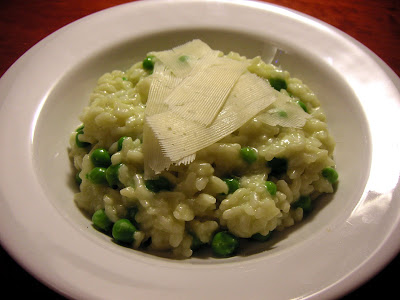
Matcha powdered green tea is traditionally whisked into hot water to make a frothy beverage, but I think matcha's herbal and tannic notes complement sugar and butter nicely in western desserts.









Although I liked the variety of vegetables and tofu in this udon dish, I didn't think the shitake/kombu broth had much depth. It's difficult to create full-flavored vegetarian broths, and traditional buddhist cooking has the additional constraint of not using onions either.
I like the idea of augmenting the udon with a healthy selection of vegetables and tofu, but I would add some dried fish (katsuo-bushi or iriko) to enhance the stock, since I consider the broth to be the sublime pleasure of soup noodles. Or perhaps Elizabeth will be able to rework the shitake/kombu broth to be more flavorful.


I saw Elizabeth's recipe for "Poached Peaches in Lemon-Ginger Miso Sauce" in her published cookbook, Washoku, and decided I needed to investigate her improbable pairing of white peaches with red miso sauce.
In this recipe, the white peaches are simmered in a syrup flavored with ginger and lemon. Elizabeth's recipe calls for lemon zest and lemon juice, but I decided to substitute lemon verbena since I thought the lemon verbena would better accentuate the perfume of the white peaches.




In this dish, the koya tofu is braised with shitake mushrooms, lotus root, gobo, carrots, and snow peas. Gently seasoning the dish with soy sauce, sake and sugar allows the textures and flavors of the tofu and vegetables to remain distinct and clear.














Here are fresh myoga blossoms, imported from Japan:
I sliced the myoga lengthwise, blanched them in boiling water, and put them in a lemon juice-based pickling liquid:
After pickling overnight, the myoga turn a bright scarlet color:


Kiriboshi- Daikon, sun-dried daikon radish strips:


Kabocha is a round, orange-fleshed squash with a green skin, similar in taste to butternut squash. Pureed squash makes a soup with a satisfyingly rich texture.



 After trimming the simmered bamboo shoots, here's what I got.
After trimming the simmered bamboo shoots, here's what I got.
